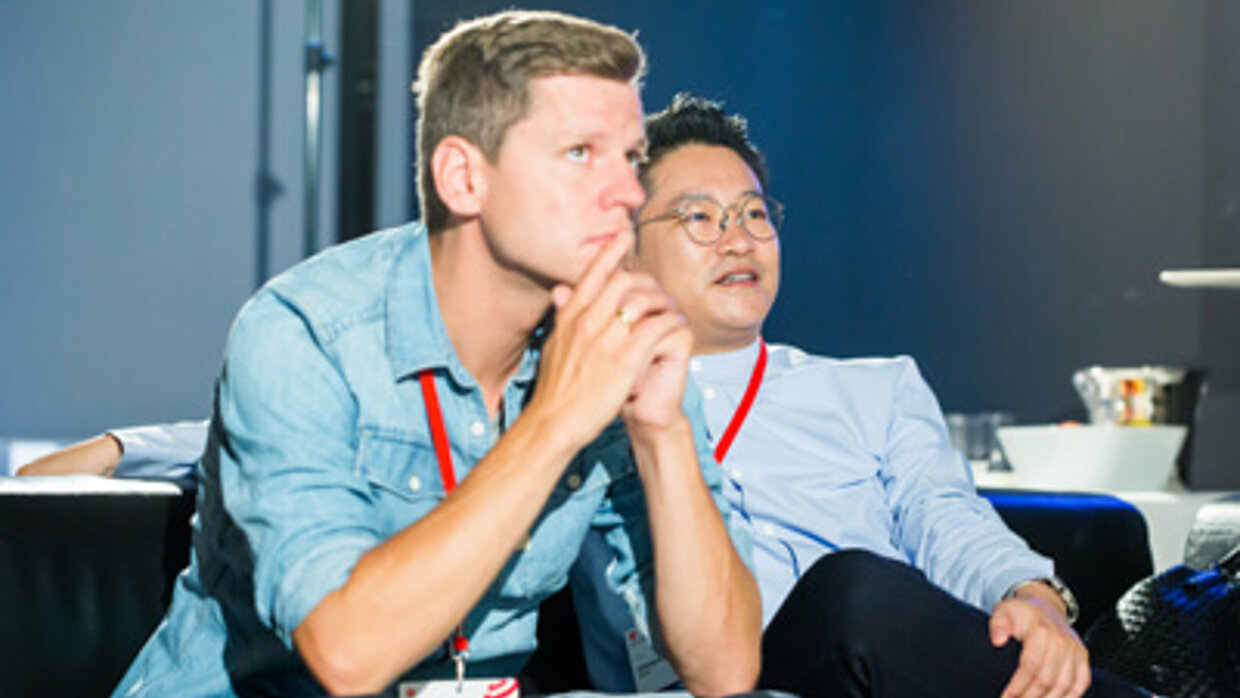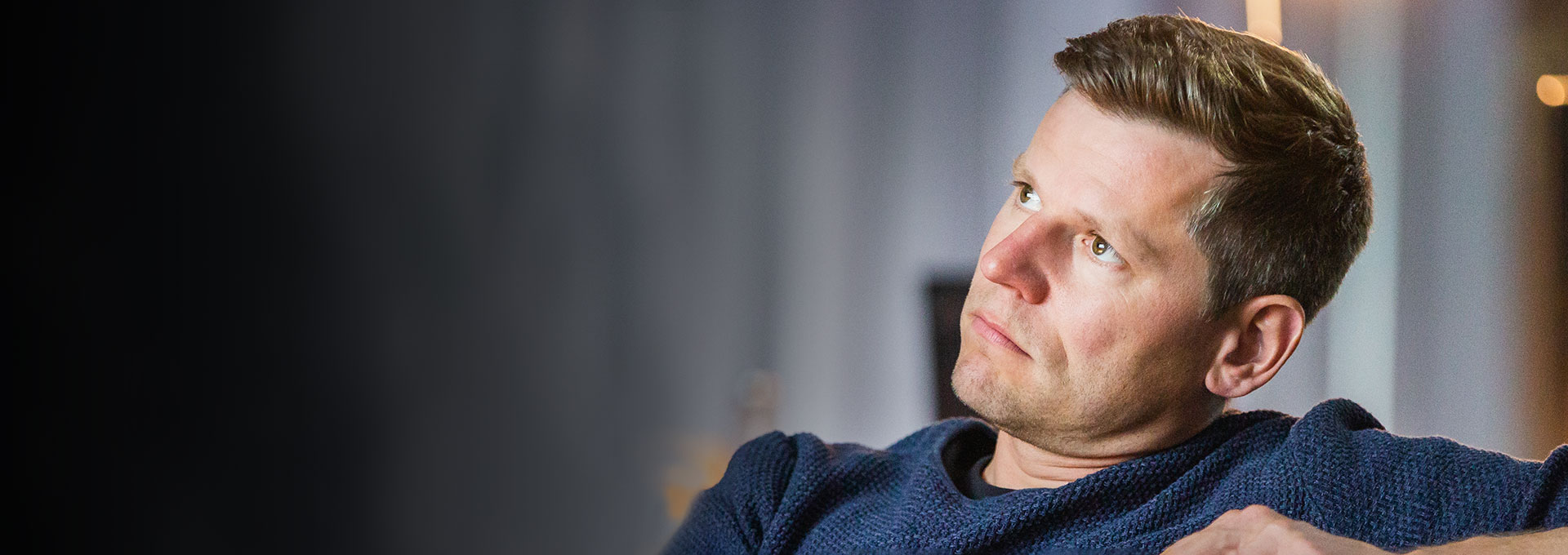
Interview with sound design expert Rainer Hirt

It is often enough to hear the subtle “click” sound when locking a smartphone and you have already recognised the device manufacturer. The value of recognition via sound is an important element for companies in corporate design, among other things. In addition, UX sound design is taking on an increasingly important role. Serving the sense of "hearing" is a fine art that has adapted over the years to technical developments such as the use of artificial intelligence.
As one of the most sought-after sound designers in Germany, Rainer Hirt talks about the innovations and the future of sound design in an interview with Red Dot.
Red Dot: To start with, a very basic question: How can brands use sounds for their branding?
Rainer Hirt: Nowadays, almost every brand has several communication channels through which it communicates with its customers, per se also aurally. From the telephone loop, to video communication measures, to digital or physical trade fair stands. With a conscious use of sounds, music and voices, brands can shape a pre-defined image and mission statement and build an extended level of identity.
In a 2019 interview with Red Dot, you said that the biggest area of innovation for sound design was in “deep learning”. How are things three years later?
Something has happened in the meantime in that there are more AI-supported software tools for sound design and composition. This is very exciting for artistically oriented projects. However, a disruption in the sense that sound designers or composers have become obsolete cannot be observed. And presumably that will not be the case any time soon.
Has a new, large field of innovation for sound design emerged since 2019?
The topic of “metaverse” is currently on everyone's lips - also in sound design. It will be particularly interesting to find out which meaningful and beneficial functions can be assigned to acoustic elements in connection with auditory brand management.
You say that notification sounds are the new audio logos. What possibilities are there for companies to transfer their brand identity into digital applications?
If you ask yourself in which moments a consumer or customer comes into direct acoustic contact with a brand, then you realise that this is increasingly the case when using a smartphone or smart devices such as smartwatches or smart speakers. As soon as a brand becomes active there, a very sensitive form of communication with customers or users is created. Notification sounds help the user to operate a device or an app more easily. These sounds may be heard frequently and thus strongly shape an auditory brand identity. These subtle and short sound elements thus automatically become a kind of acoustic brand signature.
There are sounds that we hear several times a day. This applies to incoming messages on the messenger service as well as the starting of computer programmes or the finished dispensing at the coffee machine. Many of these sounds have become learned and are hardly perceived consciously any more. How can companies still make themselves heard here?
As in visual design, the following also applies to sound design: the shrillest is not always the right thing. This means that even seemingly “overheard” sounds have a right to exist, as long as they offer added value for the user. This can also be subtle sound design, which cannot be directly imitated, but which subconsciously contributes to positively influencing a (multisensory) user experience. For example, a very short, restrained click sound effect when locking a mobile phone.
If users mute their device, such as a smartphone, sound design becomes obsolete. How can this be counteracted?
Frankly, I don't find it bad in principle when smartphones are muted. There always has to be a contextual question of meaning. Acoustic stimuli do not make sense at every time and in every location. For example, private notifications are rather undesirable in everyday office life, whereas an emergency call from home would definitely be relevant. This is where adaptive sound design solutions will be needed in the future. In other words, the devices will learn and decide which sounds make sense when and where.
Voice assistants are becoming more and more widespread and many households have now become “smart homes”. How does voice-based input and output (Voice User Interface/VUI) change the field of the UX designer?
VUI and VUX can be understood in a narrow sense as an independent discipline in which dialogue designers and voice-over artists develop new speech systems with the help of artificial intelligence. A UX sound designer has the task of thinking along with these elements in the UX sound concept and checking them for contextual and accessibility necessities in the entire experience journey.
In more classical design disciplines, there has long been a debate about the role of the designer in an automated world where robots or algorithms take over the design. What is your prediction for the role of the sound designer in the future?
AI will probably become an important sparring partner for the programme-based sound design process. For ambient music or stock music, certain algorithms in tools will help create different functional music productions in the near future. In the future, the role of the sound designer will remain with conscious conceptions and sound designs that are desired by humans and cannot be planned even through experiments.
Born in Überlingen in 1979, Rainer Hirt studied communication design at the University of Konstanz. In 2003, he founded the information portal for acoustic branding www.audio-branding.de. After his studies, he also co-founded audity, an agency specialising in audio branding and audio interaction. In addition to his work as a supervisor of various research projects at several universities, he founded the Audio Branding Academy, the first independent institute for acoustic brand communication.
Until 17 June 2022, you have the opportunity to submit your sound project in the Red Dot Award: Brands & Communication Design 2022 and have it evaluated by our expert jury. In case of winning you can use the internationally renowned Red Dot label and communicate your competition success visibly on all platforms. You can find all information about the Red Dot Award: Brands & Communication Design on our website.